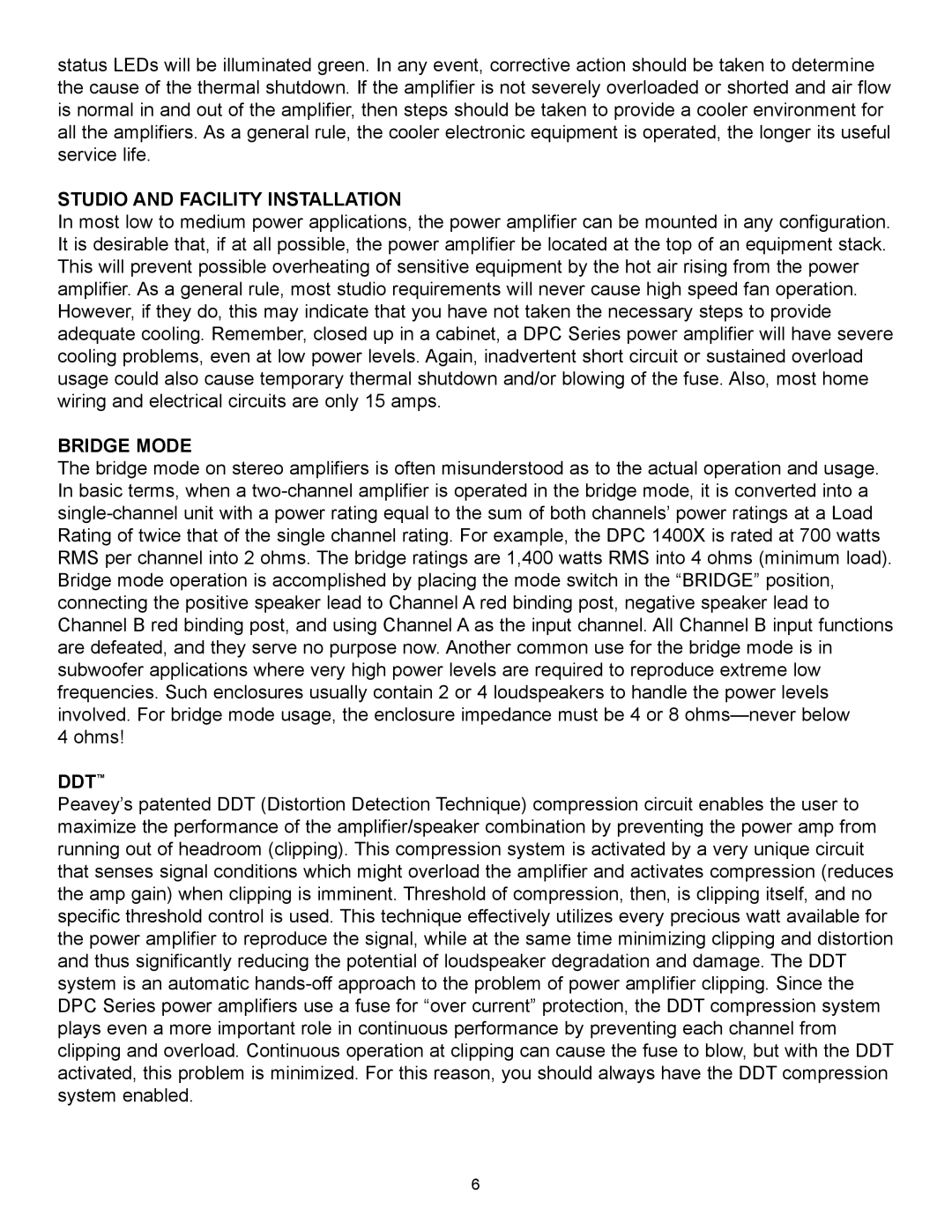1400X specifications
The Peavey 1400X is a powerful audio amplifier that has earned a solid reputation among musicians and audio professionals for its robust performance and innovative features. Designed to meet the demands of both live sound reinforcement and studio applications, the Peavey 1400X stands out as a reliable choice for enhancing sound quality and delivering exceptional power.One of the most notable features of the Peavey 1400X is its high output power rating, providing up to 1400 watts of peak power, which enables it to handle large venues and demanding applications. This amplifier is engineered with a dual-channel design, allowing it to seamlessly drive both passive and active speaker systems, making it versatile for various setups. The ability to bridge the output channels enables users to achieve higher wattage output when operating in a mono configuration, which is particularly useful for subwoofer applications.
The Peavey 1400X incorporates advanced technology to ensure consistent performance and reliability. It features a built-in dynamic limiter that helps prevent distortion and clipping by automatically adjusting the gain. This ensures that audio remains clear and punchy, even at high volumes. Additionally, the transient response of the amplifier has been optimized for high-energy performances, making it ideal for genres such as rock, heavy metal, and electronic music.
Thermal management is another key characteristic of the Peavey 1400X. The amplifier is equipped with efficient cooling systems, including strategically placed air vents and a variable-speed fan that operates quietly while effectively dissipating heat. This allows for extended usage without the worry of overheating, ensuring that the amplifier maintains its performance during long sessions or events.
The rear panel of the Peavey 1400X features a variety of input and output options, including XLR and TRS connectors for balanced audio signals, making it compatible with a wide range of audio sources and systems. The embedded speaker protection circuitry provides an additional layer of security to protect connected speakers from damaging signals, further enhancing its reliability.
With its combination of powerful output, advanced technology, and thoughtful design, the Peavey 1400X is an exceptional choice for musicians, sound engineers, and audio enthusiasts alike. Whether for live performances, rehearsals, or studio work, this amplifier delivers the performance and dependability needed to elevate any sound system.
